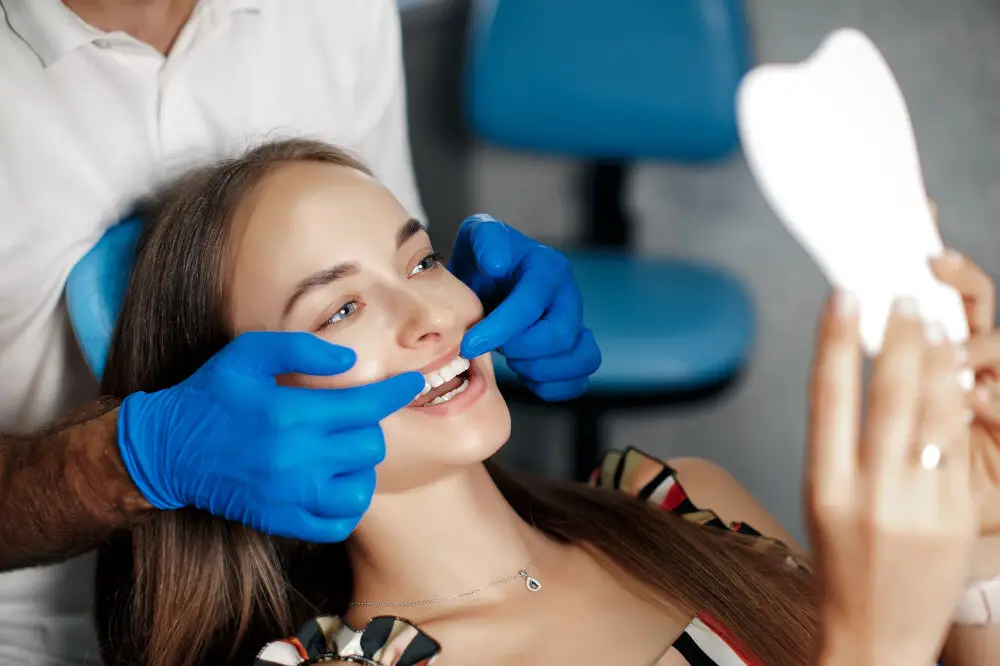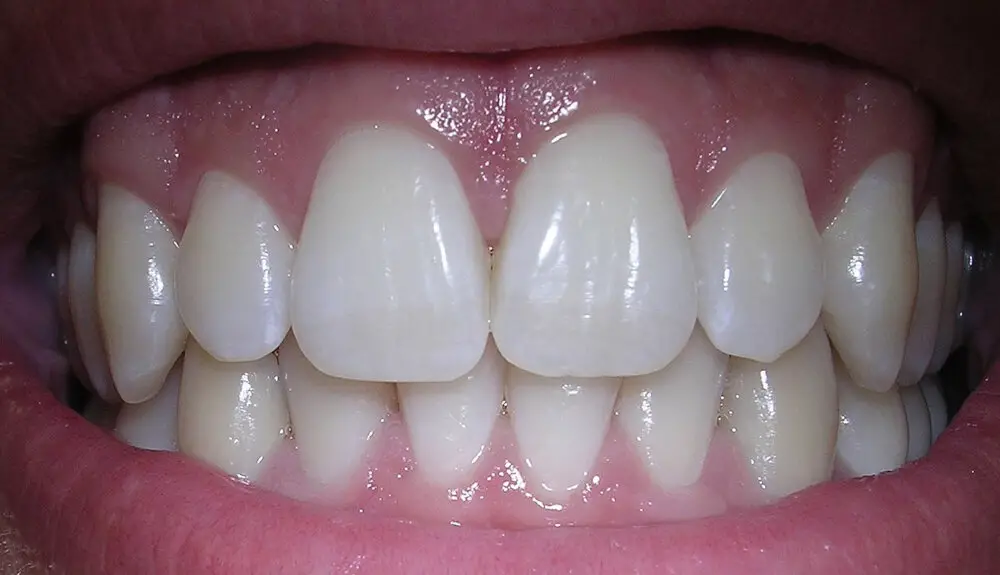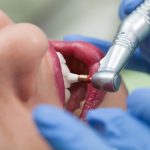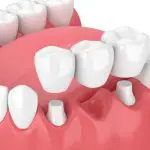Teeth Straightening: How Fast Can Rubber Bands Move Your Teeth?

A beautiful smile is a valuable asset that can improve one’s confidence and self-esteem. However, misaligned teeth can be a significant hindrance to achieving a perfect smile. Fortunately, with modern orthodontic treatment, it is possible to correct crooked teeth and achieve a straighter, more attractive smile. One of the most common methods of teeth straightening is the use of rubber bands, which are an essential component of braces. But how fast can rubber bands move your teeth, and what factors affect their effectiveness?Rubber bands are a vital part of the orthodontic treatment process, as they help to apply pressure to the teeth and jaws, gradually moving them into the desired position. They are commonly used in conjunction with braces, which are small metal or ceramic brackets that are attached to the teeth and connected by wires. The rubber bands are then attached to hooks on the brackets and worn for several hours each day. Over time, the pressure exerted by the rubber bands causes the teeth to move, gradually straightening them and correcting any alignment issues. However, the speed at which this process occurs can vary depending on several factors, including the severity of the misalignment, the type of braces used, and the patient’s individual response to treatment.
Teeth straightening is a common dental procedure that involves the use of orthodontic appliances, such as braces or clear aligners, to correct misaligned teeth and improve a patient’s bite. Rubber bands are often used in this process to help move teeth into the desired position. These small elastic bands are attached to the brackets of the braces and exert gentle pressure on the teeth, gradually shifting them into place. The use of rubber bands can be an effective way to speed up the teeth straightening process, but it is important to follow the orthodontist’s instructions carefully to avoid causing damage to the teeth or gums. With proper care and maintenance, rubber bands can help patients achieve a beautiful, healthy smile in a relatively short amount of time.
Understanding Teeth Straightening

Teeth straightening is a dental procedure that involves aligning crooked or misaligned teeth. This is usually done to improve the appearance of teeth, but it can also help to prevent dental problems such as gum disease, tooth decay, and difficulty chewing. There are several methods of teeth straightening, including braces, clear aligners, and retainers. The choice of method will depend on the severity of the misalignment, the patient’s age, and their dental health. Braces are the most common method of teeth straightening. They consist of brackets and wires that are attached to the teeth and adjusted regularly to gradually move the teeth into the desired position. Clear aligners are a newer option that involves wearing a series of clear plastic trays that gradually shift the teeth. Retainers are typically used after braces or clear aligners to maintain the position of the teeth. Teeth straightening can take several months to several years, depending on the method used and the severity of the misalignment. It is important to follow the dentist’s instructions carefully and attend all scheduled appointments to ensure the best possible outcome.
Teeth straightening is the process of aligning crooked teeth, correcting misaligned bites, and improving overall dental health. The treatment for teeth straightening involves the use of braces, clear aligners or retainers. Braces are the most common and effective method of teeth straightening, which use brackets and wires to apply gentle pressure on the teeth, gradually moving them into the desired position. Clear aligners, on the other hand, are custom-made plastic trays that fit over the teeth and gradually shift them into the right position. Retainers are used after the braces or clear aligners are removed to prevent the teeth from shifting back to their original position. The process of teeth straightening may take several months to a few years, depending on the severity of the misalignment. However, with proper care and compliance, the results can last a lifetime, providing a beautiful and healthy smile.
The Role of Rubber Bands in Teeth Straightening

Rubber bands play a crucial role in teeth straightening, particularly in the orthodontic treatment of overbite and underbite. These tiny elastic bands are used in conjunction with braces to help shift the position of teeth and jawbone. The rubber bands create a gentle but consistent force that, over time, moves the teeth into their desired position. Orthodontists use different types of rubber bands, including inter-arch, intra-arch, and triangle bands, depending on the specific needs of the patient’s treatment plan. Inter-arch rubber bands are used to correct an overbite, where the upper teeth overlap the lower teeth. The bands attach to hooks on the top and bottom braces and apply pressure to the upper teeth, pulling them back and into alignment with the lower teeth. Intra-arch rubber bands are used to correct an underbite, where the lower teeth overlap the upper teeth. These bands attach to hooks on the bottom braces and apply pressure to bring the lower teeth forward and align them with the upper teeth. Triangle bands, on the other hand, are used to correct gaps or spaces between the teeth. These bands connect two teeth and exert pressure to move them closer together. Overall, rubber bands are an essential tool in orthodontic treatment, helping to achieve a straighter, healthier smile for patients.
Rubber bands are commonly used in teeth straightening treatment to help shift teeth into their desired position. These elastic bands are attached to brackets on the teeth and exert a gentle force, gradually moving the teeth over time. The benefits of using rubber bands in teeth straightening include their affordability and effectiveness in correcting certain types of bite issues. They can also be easily replaced if they break or become loose. However, it is important to follow the orthodontist’s instructions regarding the use of rubber bands to ensure maximum effectiveness and to avoid any potential damage to the teeth or gums.
How Fast Can Rubber Bands Move Your Teeth?

Rubber bands are a popular orthodontic tool used to move teeth into their desired position. They work by applying constant pressure on the teeth and jaws, which gradually shifts them over time. The speed at which rubber bands can move your teeth varies depending on several factors, including the severity of your malocclusion, the strength of the rubber bands, and how consistently you wear them. Generally, it can take anywhere from a few weeks to several months to see noticeable progress. One of the main benefits of using rubber bands for teeth straightening is the ability to target specific areas of the mouth. For example, if you have an overbite, your orthodontist may use rubber bands to move your upper teeth back and your lower teeth forward. This can help balance your bite and improve the overall alignment of your teeth. However, it’s important to note that rubber bands should only be used under the guidance of a qualified orthodontist. If used improperly, they can cause discomfort, damage to the teeth or gums, or even delay your treatment progress.
Rubber bands are commonly used in orthodontic treatments as they are a cost-effective and efficient way to move teeth. The speed at which rubber bands move teeth can vary depending on several factors. Firstly, the size and strength of the rubber band used and the amount of force applied to the teeth can impact the speed of movement. Secondly, the age and health of the patient can also play a role, as younger patients tend to have more responsive teeth. Other factors such as the severity of the dental problem and the patient’s compliance with wearing the rubber bands consistently can also affect the speed of treatment. It is important to consult with an orthodontist to determine the most suitable treatment plan and ensure the best possible outcome.
Tips for Getting the Best Results with Rubber Bands

Rubber bands are a crucial part of orthodontic treatment for teeth straightening. They are designed to apply pressure to specific teeth, gradually moving them into their desired position. However, to get the best results with rubber bands, there are a few tips to keep in mind. Firstly, it’s crucial to wear them consistently and as instructed by your orthodontist. Skipping days or not wearing them as directed will only prolong your treatment and delay the desired results. Additionally, it’s important to change your rubber bands regularly to prevent them from stretching out and losing their effectiveness. Typically, orthodontists recommend changing them every 12 hours to ensure they are always applying the right amount of pressure to your teeth. Another tip for getting the best results with rubber bands is to avoid overstretching them. While it may be tempting to stretch a rubber band further to achieve a tighter fit, this can actually be counterproductive. Overstretching the band can cause it to lose its elasticity and become less effective in moving your teeth. It’s also important to avoid wearing multiple rubber bands at once unless instructed by your orthodontist. Wearing too many bands can cause discomfort and may not be necessary for your specific treatment plan. By following these tips and closely adhering to your orthodontist’s instructions, you can ensure that your rubber bands are working effectively to move your teeth into their desired position.
Rubber bands play a significant role in teeth straightening treatment. To maximize their effectiveness, patients should follow some essential tips. Firstly, it’s essential to wear rubber bands as directed by the orthodontist, which is usually around 20 hours per day. Secondly, patients should change the rubber bands every 12 hours to prevent them from losing their elasticity. Thirdly, avoid overstretching the bands as it can damage teeth and gums. Fourthly, it’s crucial to maintain good oral hygiene by brushing and flossing regularly to prevent bacteria build-up. Finally, patients should be patient and consistent in wearing rubber bands, as it takes time to see the desired results. By following these tips, patients can ensure that their teeth straightening treatment is effective and successful.
The article \Teeth Straightening: How Fast Can Rubber Bands Move Your Teeth\ highlights the importance of seeking professional guidance from a qualified orthodontist for teeth straightening treatment. The piece emphasizes the key points of rubber bands’ effectiveness and the need for proper supervision to avoid complications such as tooth decay and gum disease. The author also discusses the potential risks of choosing DIY methods such as using rubber bands without medical guidance. The article concludes by emphasizing that working with an orthodontist is critical to achieving the desired results safely and effectively. In summary, the article stresses the importance of seeking professional medical help for teeth straightening treatment to reduce risks and promote healthy dental care.
Conclusion

In conclusion, rubber bands are a useful tool in the teeth straightening process, but their effectiveness and speed in moving teeth depend on various factors. While they can produce visible results in a matter of weeks, the extent of their impact is influenced by the severity of the misalignment, frequency of use, and patient compliance. It is crucial to follow the orthodontist’s instructions and attend regular check-ups to monitor progress and make necessary adjustments. Ultimately, achieving a straighter and healthier smile requires patience, dedication, and a collaborative effort between the patient and the dental team.







